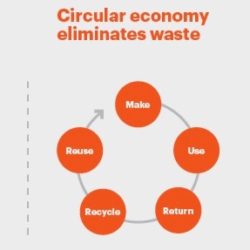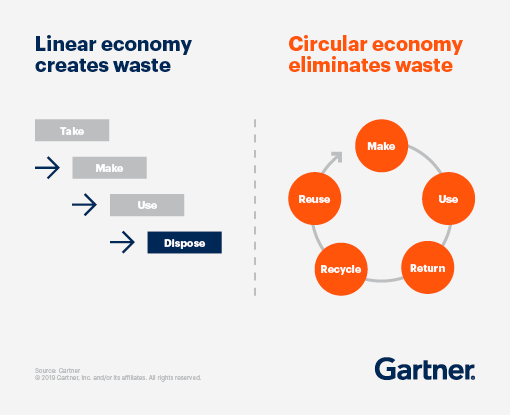‘Circular economies to replace linear economies in next decade’

The circular economy will replace linear economies by 2029 as consumer and shareholder preferences shift towards sustainability, according to global research and advisory company Gartner. In order to remain competitive, chief supply chain officers (CSCOs) need to start preparing for this transformation by looking at how they can replace wasteful linear models with circular supply chains focused on the reuse and renewal of materials.
In Gartner’s definition, circular economic business models encourage the continuous reuse of materials to minimize waste and the consumption of natural resources, whereas linear economies create waste. Organizations are under growing pressure from consumers and governments alike to reduce the amount of waste they are producing, according to Steven Steutermann, Managing Vice President in the Gartner Supply Chain practice. This requires a shift towards a circular, waste-free economy.
“The supply chain will play a key role in this process. 84% of participants in Gartner’s recent ‘Supply Chain and the Circular Economy’ survey stated that the supply chain has, or will have, decision-making authority when it comes to their organization’s circular economy strategies and initiatives,” he says.
Collaboration is key to creating the right ecosystem
Steutermann appreciates that ten years is not a long time to turn a supply chain system around. “CSCOs should deploy change management programmes and start pilots now,” he advises. However, CSCOs cannot expect to realize the switch from a linear to a circular economy alone. To create the necessary ecosystem, they should collaborate with internal product designers and suppliers to understand exactly how products are consumed and disposed after consumption. “They should start with a single question, such as ‘How can I reduce packaging?’, and expand from there,” he suggests.
Circular economy requires new metrics
The Gartner survey reveals that the biggest challenge in circular-economy efforts is setting effective goals to measure how the proposed changes will impact consumer preferences and, ultimately, margins. Most current sustainability-related metrics, such as reducing waste to landfills or carbon dioxide emissions, are designed for today’s linear models. However, new metrics are required for the circular economy. “Good metrics for the circular economy could be the percentages of reclaimed, reused materials for production, or the reduction of single-use plastic,” recommends Steutermann.











